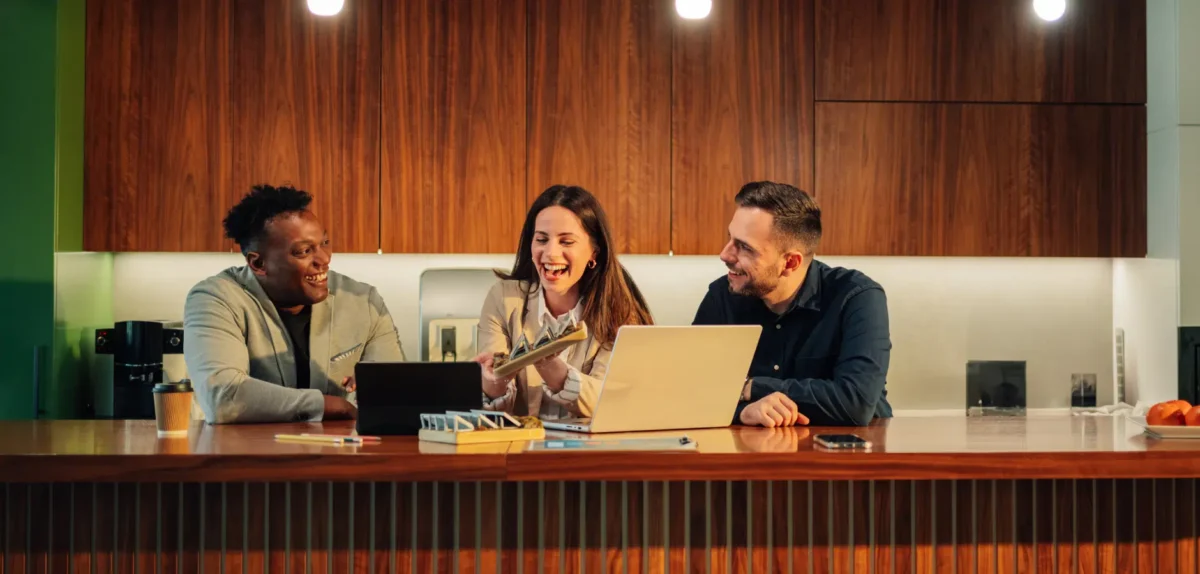Imagine recommending your favorite streaming service to a friend and only getting rewarded after they watched an entire series. You’d probably be really annoyed about the long wait. This is how B2B referrers may feel when they receive one-time rewards.
B2B sales cycles are more like a slow-burn drama than a quick reality show episode—full of steps, decision-makers, and milestones that take time to complete. So, asking advocates to wait until a final sale is closed before receiving any reward misses opportunities to keep them engaged.
Enter multi-objective referral programs. Offering rewards at multiple points in the buyer’s journey allows you to create an attractive offering that excites referrers to promote your brand.
Why solely rewarding sale conversions doesn’t always work in B2B referral programs
Traditionally, referral programs are structured around fast consumer transactions—think quick buys on ecommerce sites where a friend’s recommendation quickly leads to a purchase.
But in the B2B world, it’s rarely that straightforward. B2B purchases typically involve a long buyer’s journey, with multiple decision-makers and stages.
If a B2B referral program only rewards for the final sale, it misses out on key opportunities to keep potential clients engaged along the way.
Offering rewards at multiple touchpoints can be more effective for B2B referral programs.
These steps help build trust and keep prospects moving through the funnel without focusing solely on a single sale conversion. Plus, incremental rewards create a sense of progress for referrers, encouraging them to stay engaged and continue recommending your business.
What is a multi-objective B2B referral program?
Multi-objective referral programs incentivize specific actions throughout the sales process.
Instead of waiting until the final sale to reward referrers, this type of program incentivizes key actions along the way. These actions could include signing up for a webinar, requesting a demo, or even subscribing to a newsletter.
Each step offers an opportunity to build momentum, keeping both the referrer and the potential customer engaged.
A multi-step approach is particularly effective in B2B, where the sales process is longer and often involves several decision-makers.
The benefits of a multi-objective B2B referral program

By setting various goals throughout the buyer’s journey, multi-objective B2B referral programs bring unique advantages. Here’s how they can elevate your referral strategy:
- Increased engagement: Rewards at multiple touchpoints keep referrers and prospects actively engaged throughout the buyer’s journey.
- Can shorten the sales cycle: Incentivizing smaller actions can accelerate the progression from interest to purchase.
- Better relationship building: Frequent rewards foster stronger connections with referrers and builds trust with potential clients.
- Higher conversion potential: Encouraging actions along the journey leads to more touchpoints and, ultimately, more opportunities for conversion.
- Improved retention: Multi-objective programs create a positive, continuous experience, making referrers more likely to participate again.
How to setup a multi-objective B2B referral program
The first step to creating a multi-objective plan is setting goals. Next, use an advanced referral platform to offer customized rewards throughout the buyer’s journey and accurately track and optimize campaigns.
Define your objectives
Setting up a multi-objective referral program for a B2B brand starts with understanding the buyer’s journey. Break it into key stages, and then tailor rewards to each step. Instead of focusing only on the end goal—the sale—consider incentivizing smaller, meaningful actions along the way. These could include signing up for a demo, sharing content, or engaging with a webinar. It’s all about recognizing value in every process stage, not just the finish line.
You can create the following types of objectives:
- Referring a new customer to complete a specific task (demo, sales call, etc.)
- Referring to a specific kind of new customer (enterprise client, qualified lead, etc.)
- Referring a new customer to engage with the product in a specific way (complete a free trial, activate a number of accounts, etc.)
Use referral software to streamline your multi-objective B2B referral program
Running a multi-objective referral program is more complex than a traditional, single-action referral setup. But with powerful software like impact.com/advocate, brands can streamline every part of the process, from structuring rewards to tracking different objectives.
Here’s how referral software simplifies it:
Offer customizable rewards
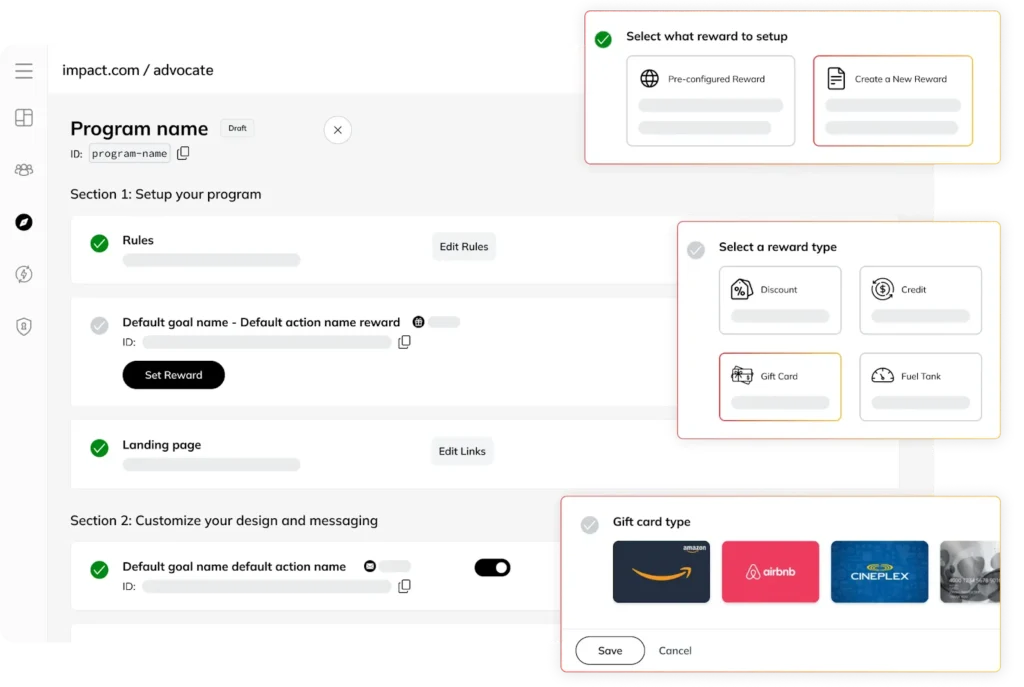
For each objective you can decide:
- Who to reward (promoter, referred customer, or both)
- When to reward (when the referred customer performs an action, or when they meet certain criteria)
With impact.com/advocate, you can design a reward structure that fits your specific sales journey and goals. You can build a custom program that offers personalized incentives at every stage, rewarding both referrers and new customers.
The platform allows you to set rewards tailored to different actions and behaviors, from initial sign-ups to closed deals.
Reward options range widely—think cash, gift cards, points, credit, discounts, product upgrades, or even custom perks. To increase engagement further, you can layer in recurring, time-based, and tiered rewards, encouraging ongoing referrals and rewarding referrers for bringing in multiple customers.
It’s simple to integrate with your existing tools and systems. You can easily reward specific events, like free trial sign-ups, deal closures, or newly created opportunities. The platform also supports tier-based programs, allowing you to offer bigger rewards as referrals stack up.
Want to encourage a variety of actions? You can set up multi-objective incentives to motivate everything from initial interest to final sales.
Engage customers throughout the buyer’s journey
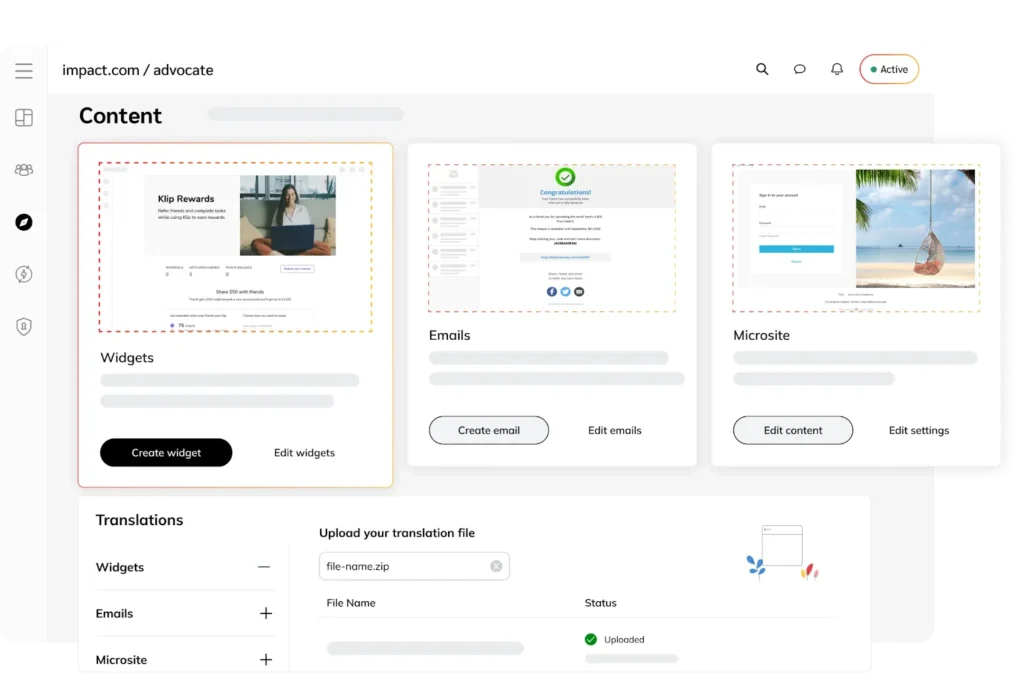
Meeting customers at the right moments is crucial for a successful referral program. Leslie Barret, former Senior Director of Customer Marketing and Evangelism at Sendoso, used a unique way to get feedback from customers and create a sense of community:
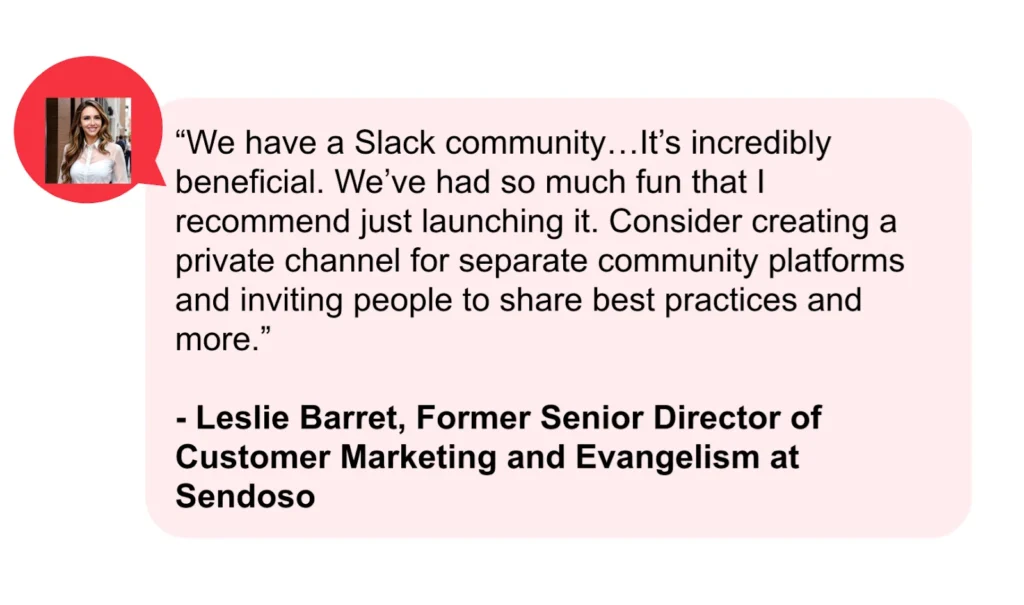
impact.com/advocate has customizable and on-brand widgets that can showcase your program at key points in the buyer’s journey—whether on your website, in an app, on specific landing pages, or even on the “thank you” page after purchase.
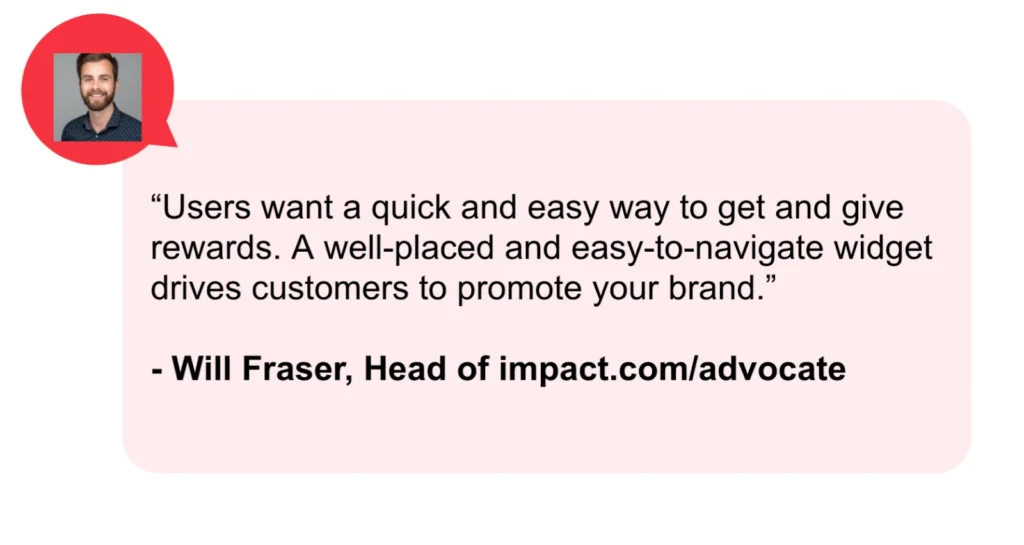
Flexibility in where you communicate with customers makes your program visible when customers are most engaged. This makes it easier for them to participate when the time is right.
Track, monitor, and optimize your B2B referral program
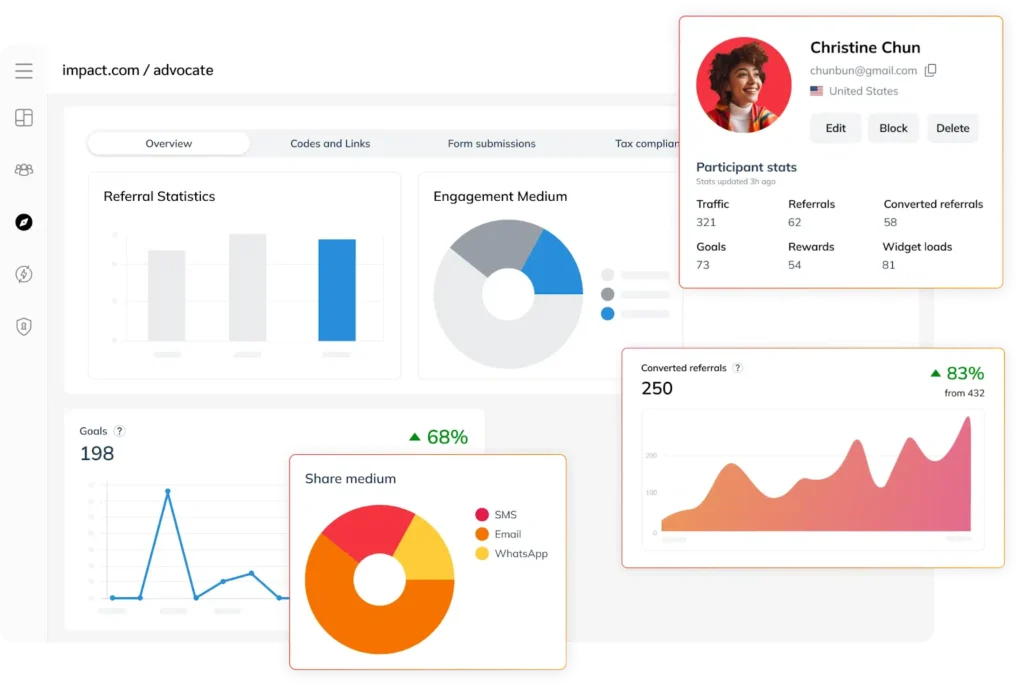
You need reliable tracking and analytics tools for a multi-objective referral program to drive results. With impact.com/advocate, you can easily pull detailed reports from the analytics dashboard to monitor key metrics like revenue and engagement.
Accurate data gives you a clear picture of your program’s performance, helping you understand what’s working and what needs adjustment. By tracking these insights, you can demonstrate the ROI of your referral efforts and make confident, data-driven changes to keep your program on track and continuously improve its effectiveness.
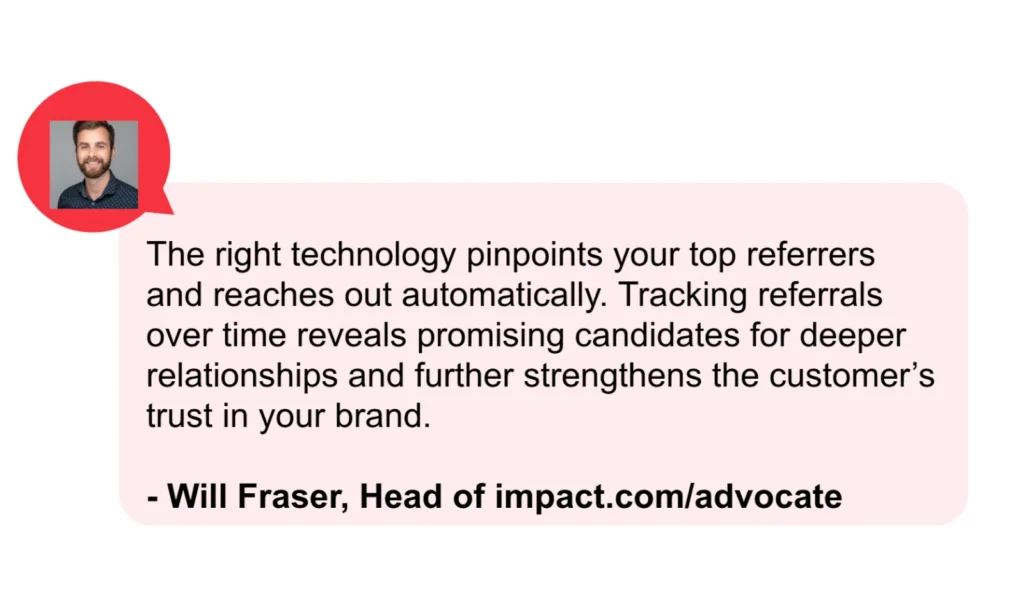
How Acumatica boosts customer enthusiasm with a double-sided B2B referral program
The cloud ERP business management system Acumatica rewards both the referrer and the prospect at various stages, from initial sign-up to purchasing. For a qualified referral, the referrer earns a $250 Visa gift card, while the prospect enjoys 15% off their software subscription. Then, when the referred person becomes a customer, the referrer receives a $1000 gift card.
The approach works because it’s mutually beneficial—referrers feel motivated by frequent, achievable rewards, and prospects experience ongoing value and engagement.
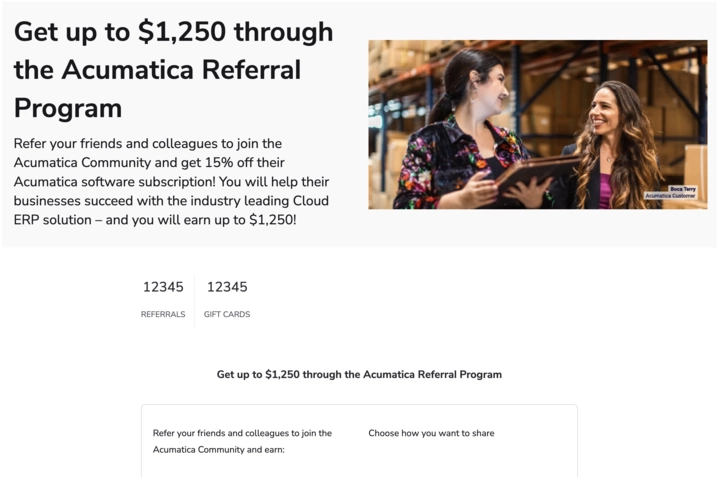
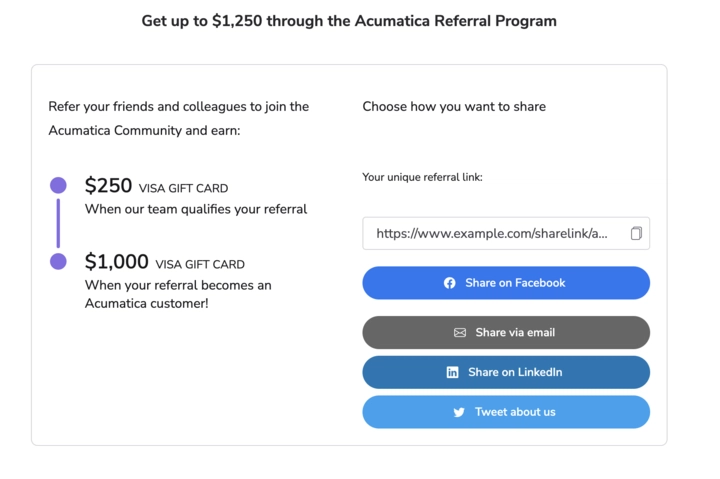
Start driving results with a smarter B2B referral strategy
To drive long-term success with your referral program, adopting a multi-objective approach can make all the difference. By rewarding key actions throughout the buyer’s journey, you engage referrers, create stronger connections, and encourage a steady flow of new customers.
With impact.com/advocate, scaling a multi-objective program is simpler than ever. The platform empowers you to create tailored rewards, engage customers at the right moments, and monitor performance seamlessly. Automated tools and customizable features simplify refining and optimizing your program, helping it align with your business goals and deliver measurable results.
Ready to streamline your referral strategy with a flexible and powerful platform? Get a free demo of impact.com/advocate to get started.
Want to learn more about how referral marketing strategies can grow your business? Check out these resources:
- The state of referral marketing report 2024 [research report]
- Top 6 customer referral marketing trends your brand can leverage in 2024 [blog]
- 7 referral marketing strategies to grow your retail business [+stand-out brand examples] [blog]
- Turn delighted customers into revenue-driving advocates [ebook]
- More than a pop-up: Building a customer referral program that scales [+ the tech that drives it [blog]
- [Check out more referral marketing resources]
FAQs:
A B2B referral program encourages businesses or professionals to refer new clients to your company in exchange for rewards. Unlike consumer referral programs, B2B referrals often focus on building long-term partnerships and may include incentives at different stages of the buyer’s journey.
To ask for B2B referrals, approach clients at key points in your relationship, like after a successful project or positive feedback. Make the process easy by providing a referral link or program details, and offer meaningful rewards that align with their business goals. Personalized and on-brand requests work best in a B2B setting.
A multi-objective referral program rewards referrers for different actions throughout the buyer’s journey, not just the final sale. It encourages engagement by offering incentives for steps like signing up for a demo, completing a trial, or reaching key milestones, making it ideal for longer B2B sales cycles.



